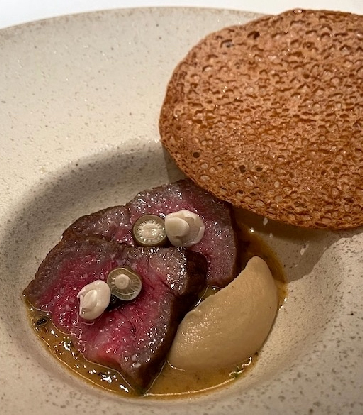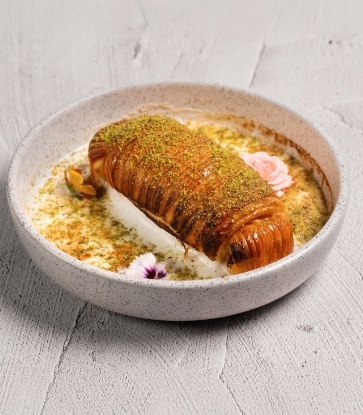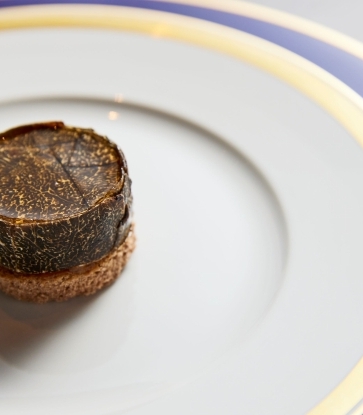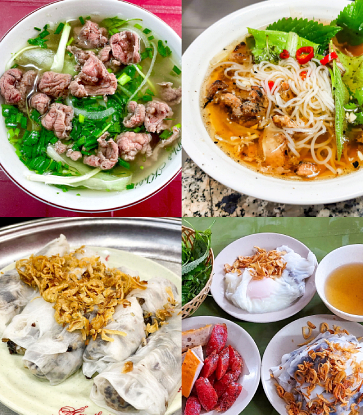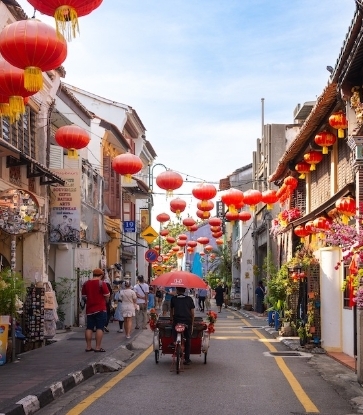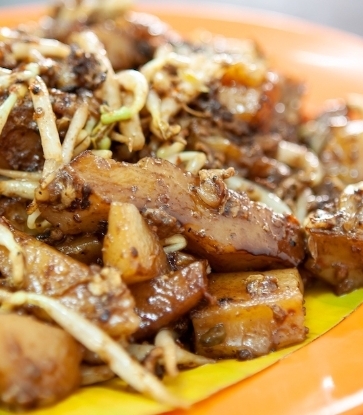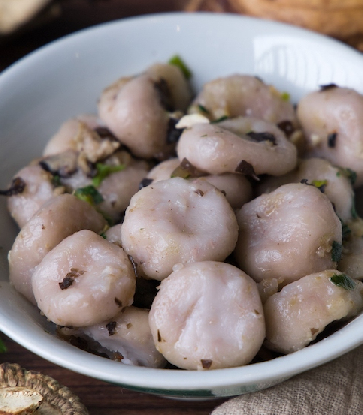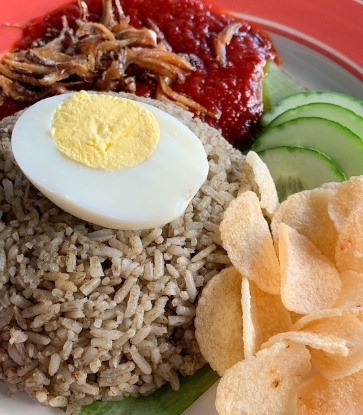The Hainanese have been renowned for their culinary prowess in Malaya since the turn of the 20th century and are often credited for shaping the local food culture.
Among the last of the Chinese to arrive in the British-ruled region, the community took on the only remaining vocation available at the time, serving as cooks and housekeepers for the British colonialists. Known for their precision, the Hainanese earned a reputation for culinary excellence. Even the fussiest Nyonya matriarch, the most demanding food critic imaginable, would defer to the Hainanese chefs in culinary matters.
As the British started leaving Malaya, however, the Hainanese lost their livelihood and found their world turned upside down. But rather than fall into dismay, the Hainanese cooks started their own food-related businesses. In Penang, like elsewhere in Malaya, the Hainanese ran almost all the restaurants, banquet halls and kopitiams. Goh Thew Chik Hainan Chicken Rice was one of these establishments.

Back in Hainan, China, Wenchang chicken rice is a beloved local staple. Rotund, brown-feathered chickens are prized in Wenchang county. Usually raised to one year of age, the cooked birds yield flavorsome, succulent meat. To serve, the chicken is delicately chopped into bite-sized, bone-in, skin-on chunks and served without any dressing at all.
As the Hainanese settled down in Southeast Asia, the dish evolved to incorporate pandan leaves and lemongrass, with an additional drizzle of soy sauce and a spicy chili dip on the side — giving rise to what is now known as Hainanese chicken rice.
Goh Thew Chik Hainan Chicken Rice, which serves this Southeast Asian rendition, was founded in 1950 and is run today by the two grandsons of the founder, Goh Thew Chik. Goh See Yong, 70, runs the kitchen and Goh See Wah, 69, is in charge as the head chicken chopper.
We sat down with Goh See Wah to hear the story behind his family’s famous chicken rice business.

Can you tell us more about your grandfather who started the business?
My grandfather, Goh Thew Chik, came from Wenchang county in northeast Hainan Island. Wenchang is very famous for its chicken rice, and Hainanese from other parts of the island often regard the Wenchang version as the best around.
My grandfather left Hainan just after World War II to escape war and famine, and also to seek his fortune in Nanyang (Southeast Asia). He trekked through Siam and eventually ended up in Nibong Tebal, where he settled down and married my grandmother, who is a Penang-born Hainanese. This was his second marriage, as grandfather already had a wife back on Hainan Island.
In Nibong Tebal, my grandfather started working as a coffee shop assistant in a Hainanese-owned kopitiam, serving coffee, toast and eggs to customers. After acquiring the necessary skills and experience, he crossed the channel over to Penang Island, where he worked at Kong Thai Lai, one of Penang’s most famous Hainanese kopitiams.
Eventually, grandfather wanted to strike out on his own. The Hainanese at the time were famous for their kopitiam breakfast fare (coffee, toast and eggs), chicken rice and banquet meals at Hainanese-run restaurants. Grandfather chose to open a chicken rice eatery, as he was a Wenchang native, respected by other Hainanese for this very dish.
He opened this restaurant, which bears his name, in 1950. The chief cook then was actually my grandmother, who conceptualized all the dishes offered. The whole family helped out in the restaurant, and business was very good.
My grandfather passed away in 1967, after which my father, Goh Ching Ting, took over the running of the restaurant for the next three decades.
What makes your restaurant stand out from other chicken rice spots?
For one thing, we are the oldest family-owned Hainanese chicken rice spot in Penang. My elder brother, Goh See Yong, personally supervises all the cooking in the kitchen, according to our old family recipe. See Yong used to do all the cooking himself, but now, he delegates much of the responsibility to his son, Goh Shyh Shyang, so that the young man can acquire the right skills while under the supervision of his father.
He is one of the fourth generation of our family involved in the business. See Yong’s daughter, BH Goh, also helps out at the front of house to serve our guests, as well as takes care of the billing and payment.
For our customers, the knowledge that the same family still runs the restaurant gives them an added assurance that they will get basically the same food they remember from their childhood.

What are the key ingredients and techniques for a good chicken rice?
Our family’s recipe and techniques are from our paternal grandmother, who prepared it the Hainanese way — poaching the chicken with garlic and scallions until just cooked. No ginger.
We later adapted the Cantonese way of dunking hot, freshly poached chicken in cold, iced water to stop the cooking process immediately, allowing the meat inside to remain moist, whilst giving the poached chicken a firmer, smoother skin texture.
We only use good-quality imported rice, which we first sauté in rendered chicken fat before adding the chicken stock, obtained from poaching the chickens earlier. We also add fresh pandan leaves for their fragrance.
For the chili dip, we grind fresh red chilies with shallots, garlic, ginger and calamansi juice. We do not use vinegar as its taste is too sharp and acidic. Calamansi juice provides a gentler sourness.
What advice did you receive from your father and grandfather in mastering the art of Hainanese chicken rice?
Actually, our grandmother was the chief cook and the one who taught us everything. She cooked it the traditional way: poach the chicken until just done, then leave the cooked chicken to rest before chopping it up. Her sense of timing was impeccable, and she passed all her knowledge and skills down to us.
Is there a secret family recipe that sets your chicken rice apart?
Every Hainanese family loves their poached chicken and has perfected the act of poaching it. Our family recipe is not drastically different from those followed by other Hainanese families. We use chickens of the right age and size (to yield perfectly textured meat when cooked), boil the chickens at the right temperature and for the right amount of time. We know when to remove the chicken, the amount of water to be used in boiling (it will be used for cooking the rice afterwards), and the precise amount of garlic, scallions, salt and pepper to add. We simply cook it better than others because we do it more frequently, day in, day out. As they say, practice makes perfect.

How do you feel about the need to preserve tradition when it comes to cooking?
We always feel a responsibility to perpetuate our family legacy, and being traditionalists, we tend to want to make sure our heritage is maintained. But we also cannot remain static forever, as we need to be able to change with the times and to satisfy new customer demands.
Do you see customer preferences changing with the times? How do you keep up with that?
We have been operating for over 70 years, and we have been helping our parents in our family business ever since we were young boys. We have seen customer tastes change over the decades: people nowadays want less salt and less fat in their chicken rice meals.
Customers tend to cut back on carbs and eat much less rice nowadays. In the old days, a customer would wolf down four bowls of chicken rice in one sitting. Nowadays, we can have two customers sharing one bowl of rice, but much larger amounts of chicken.
We tweak the way we cook — we lessen the salt and fat content in the chicken rice and also alter the amounts of rice and chicken we prepare daily to match today’s customer demands.
Do you have plans to alter the ambiance of your restaurant?
At the moment, we do not have any plans to change our restaurant setting. Our regular customers return because of the old, familiar ambiance, other than the food. We will continue to provide them with that sense of assurance.
What are the biggest challenges that you face in your business today?
The rising cost of ingredients is always a challenge. We do the best we can under the circumstances and work closely with our regular suppliers to get the best possible ingredients without having to compromise on the quality of our offerings.
How do you feel about getting listed in the MICHELIN Guide?
We are very happy to be given global recognition, of course. We see a lot of new customers, especially foreigners, who come to our restaurant. They trust the MICHELIN Guide in its selection of restaurants that meet their criteria, based on global standards.



